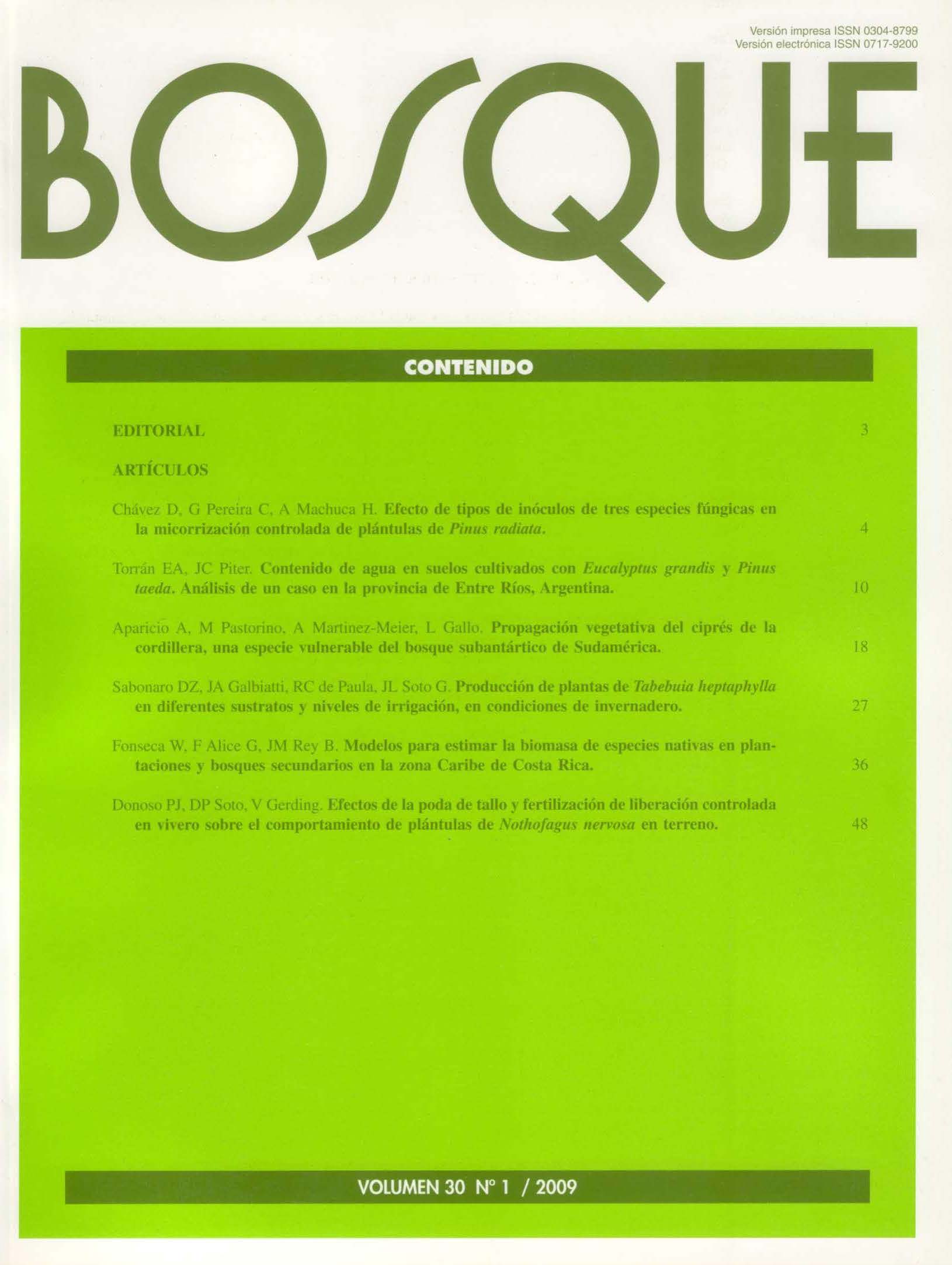Main Article Content
Apr 30, 2009
Abstract
The use of forest ecosystems as carbon sinks is now more accepted. However, credible information about its growth in terms of biomass and its capacity to capture and store CO2 is still insufficient in order to suggest ways by which forest owners should be compensated. The objective for this study was to construct models that allow us to determine tree biomass for native tree plantations of Hieronyma alchorneoides Allemào, Vochysia guatemalensis Donn and a group of 35 species of secondary forests in the Costa Rican Caribbean region. In each plantation the tree with the mean diameter at breast height (d) was harvested; in secondary forests the harvested tree corresponded to the mean d tree with the highest Importance Value Index (IVI) for each diametric class. Destructive sampling was used, separating each tree component and collecting a field sample in order to determine dry matter content (MS). All selected models had R2aj values above 82.6%. Tree species from secondary forests showed the lowest R2aj values. Stem, roots and total biomass had R2aj values above 91.3%, while leaves and branches had values between 82.6 and 94.1%. Biomass expansion factor (BEF) in secondary forest was 1.44 and in forest tree plantations it was 1.56. The radical biomass (Bra) relationship to total aboveground biomass (Bat) and stem biomass (Bf) in secondary forests was 0.25 and 0.37, respectively, 0.26 and 0.39 for V. guatemalensis and 0.3 and 0.52 for H. alchorneoides.


